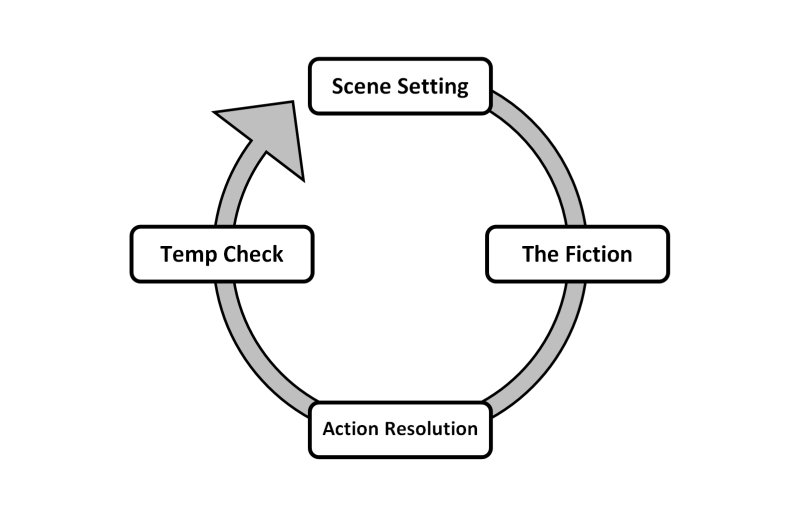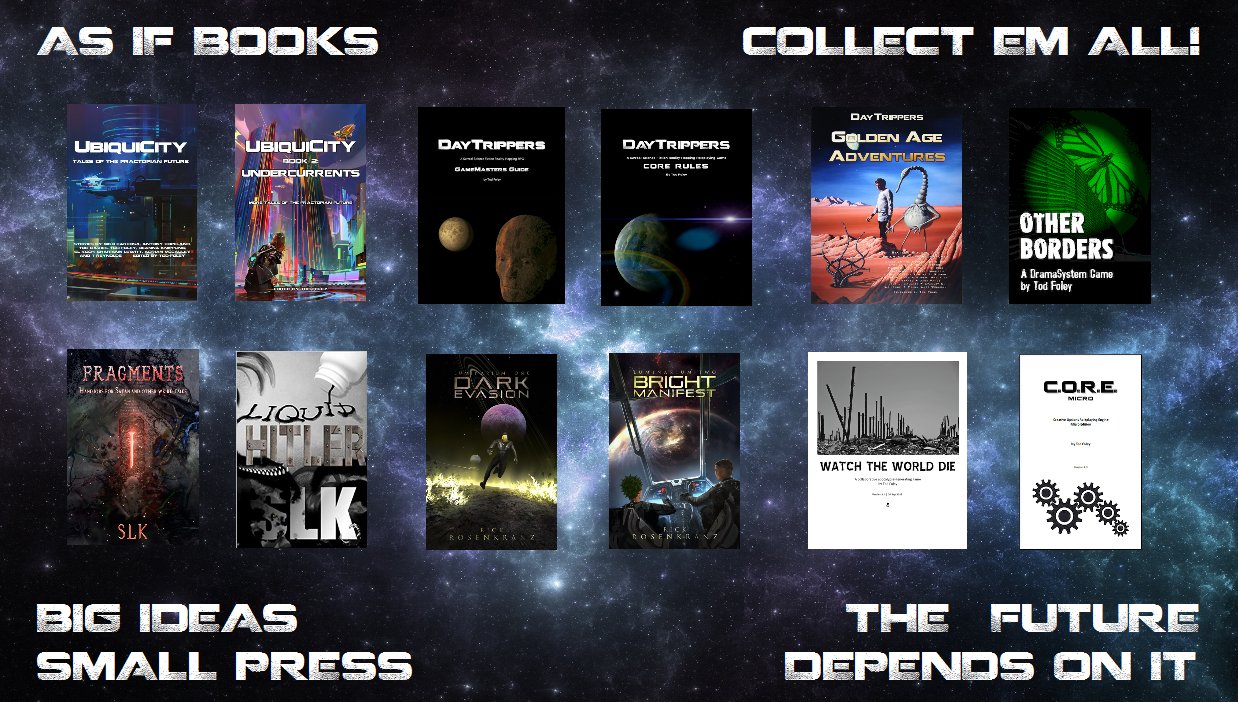
Aug 12, 2022 | Games, Words in a Row
The condition of CORE COMPLETE right now is:
- Mechanically — how to play it — finished and in active playtesting.
- Pedagogically — how to run it — still designing an optimal approach.
This is because CORE is built to facilitate a specific type of play: one I can’t assume your group is experienced with. Narrativism in general can be a tough pill for some people to swallow, and CORE presents a deliberately “hybrid” system that might – at first glance – be easily mistaken for a “Trad” game. But the Narrativism shows itself quickly, and the GM must have confidence in their ability to run in a loose and collaborative style. This may or may not be something you can just “teach” someone; but like any soft science, you can approach it a well-structured way, in order to provide the student with the right learning tools — in the right order — to understand the subject to the depth of which they’re capable. In other words, this is about pedagogy.
It’s pretty rare for a game design to bother teaching how to GM the experience pedagogically. It’s even more rare for a game to describe the designer’s intended experience of play phenomenologically. The assumption seems to be “an RPG is an RPG” and “you bring your own style to the table.”
While it’s true that all games are subject to playstyle, some games actually aim for an experience that’s qualitatively different than the things we usually think of when we think about RPG play (especially “trad” play).
The designers of such games must put in additional work to describe what it is about this game that makes the experience different, or requires a specific approach, rather than simply dumping some mechanics in front of you and letting you figure it out.
This can be hard to do, given the “omniscient” perspective of the designer.
But more of us should do it.
So that’s what I’m doing.

Aug 9, 2022 | Interactive, Words in a Row
Want a custom PlotField based on a story of your choice?
My commission rate is $50 US.
This story may be one of your own, or not. It may be an episode of a TV series, or even a movie! The only requirement is that I must be able to view it online for free. For more info so my Ko-fi commissions page at https://ko-fi.com/todfoley/commissions

Aug 8, 2022 | Words in a Row
ARE YOU AN FLGS OR RESELLER OF BOOKS AND GAMES?
I want to talk to you!
As If Books and Games is moving into wholesale and brick-n-mortar distribution, and we want our products in YOUR store!
Contact me here or email tod@asifproductions.com for more details.

Aug 1, 2022 | Words in a Row
Dungeon of Dynor – Project Update
WE HIT LEVEL ONE TODAY! LEVEL ONE WILL BE RESTORED!
Like many classic megadungeons in history, Dynor gets harder as you go deeper. Level 1 is (roughly) balanced for PCs level 1-2.
You can help fund the restoration of all 10 levels here: https://as-if.itch.io/the-dungeon-of-dynor

Jul 25, 2022 | Editing, Words in a Row
AS A WRITER AND EDITOR, I’m a strong advocate of “Cutting to the Beat” — which means for each chapter, you want to start as close as possible to the beat you’re about to establish, establish it, and get out.
But I also love great literary stylization and emotional affect, and this is often more about tone than plot. David Foster Wallace was a master at this: he would write long passages in which there was there’s no “action” per se, but you felt the MC’s feelings and thoughts through Wallace’s vivid and evocative depiction of the world they see. It’s more about voice and tone at that point.
These approaches work differently in different types of stories, as well. You need to decide whether your story is one that mostly “wants” to stick to the beats to maintain forward momentum, or takes time to rely on voice and tone for immersion, or a mixture of the two.
The manner and degree to which you mix those two things will become a big part of the unique register of your “voice” in this book.

Jul 22, 2022 | Games, Words in a Row
This PC Sheet includes fields for all the new CORE stats and data, along with plenty of space for notes.
PDF format, permission granted to reprint.
https://todfoley.com/wp-content/uploads/2022/07/core_pc_sheet_0-1-6-1.pdf






